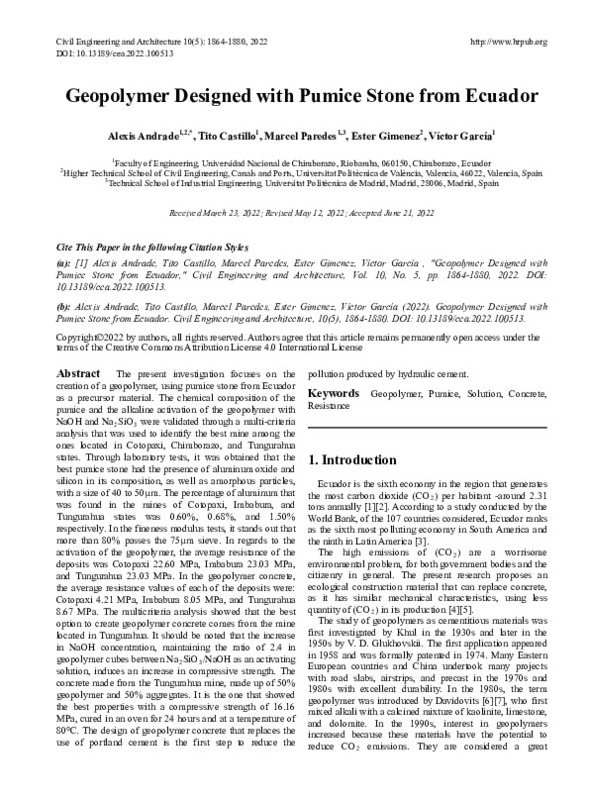JavaScript is disabled for your browser. Some features of this site may not work without it.
Buscar en RiuNet
Listar
Mi cuenta
Estadísticas
Ayuda RiuNet
Admin. UPV
Geopolymer Designed with Pumice Stone from Ecuador
Mostrar el registro completo del ítem
Andrade, A.; Castillo, T.; Paredes, M.; Gimenez-Carbo, E.; García, V. (2022). Geopolymer Designed with Pumice Stone from Ecuador. Civil Engineering and Architecture. 10(5):1864-1880. https://doi.org/10.13189/cea.2022.100513
Por favor, use este identificador para citar o enlazar este ítem: http://hdl.handle.net/10251/191804
Ficheros en el ítem
Metadatos del ítem
| Título: | Geopolymer Designed with Pumice Stone from Ecuador | |
| Autor: | Andrade, Alexis Castillo, Tito Paredes, Marcel García, Victor | |
| Entidad UPV: |
|
|
| Fecha difusión: |
|
|
| Resumen: |
[EN] The present investigation focuses on the
creation of a geopolymer, using pumice stone from Ecuador
as a precursor material. The chemical composition of the
pumice and the alkaline activation of the geopolymer with ...[+]
|
|
| Palabras clave: |
|
|
| Derechos de uso: | Reconocimiento (by) | |
| Fuente: |
|
|
| DOI: |
|
|
| Editorial: |
|
|
| Versión del editor: | https://doi.org/10.13189/cea.2022.100513 | |
| Tipo: |
|









